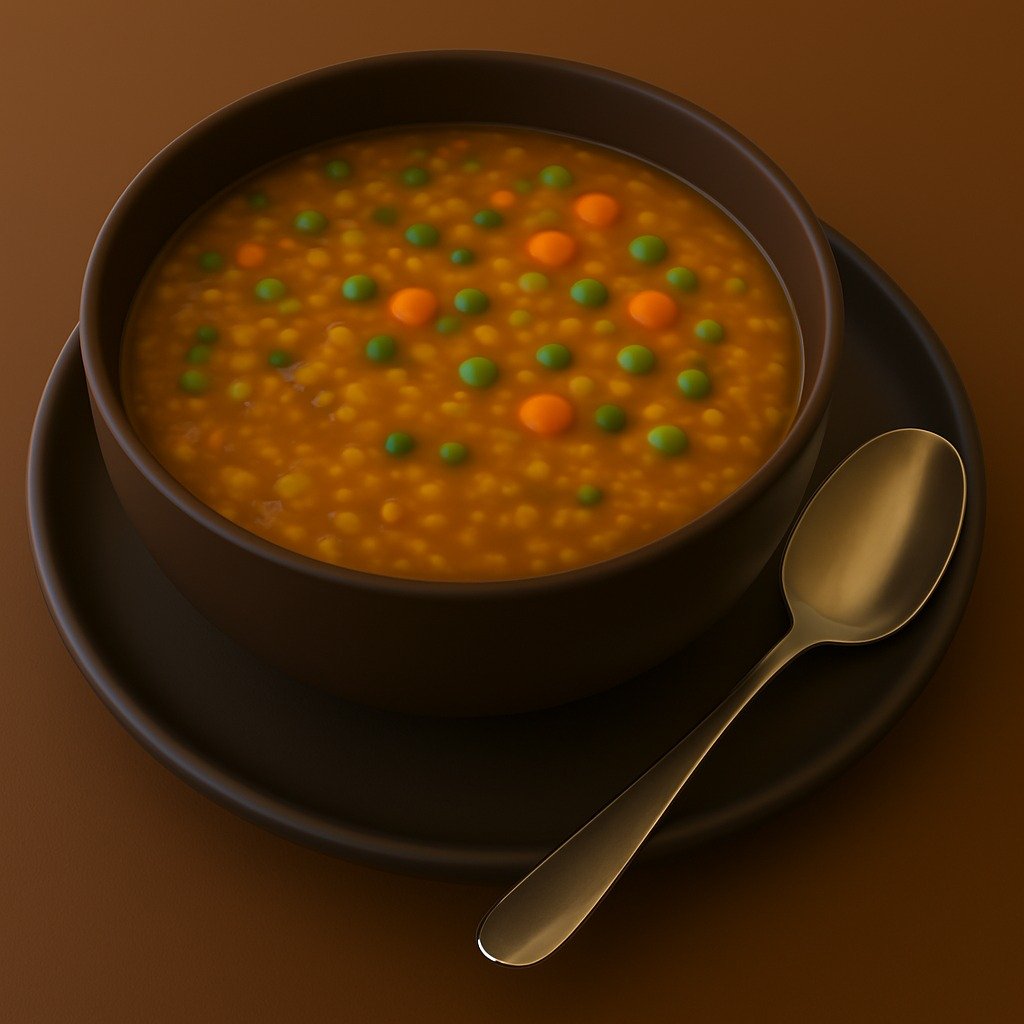Steaming hot, tangy, spicy, and deeply comforting—Bisibelebath is Karnataka’s answer to a hug in a bowl. Traditionally made with toor dal, we’ve reimagined this iconic dish using the gentle, easy-to-digest masoor dal—without losing the magic. Whether it’s a weekday lunch or a festive weekend meal, this version delivers all the depth with a softer Ayurvedic edge.
What Is bisi bele bath (Masoor Dal Version)?
Bisi Bele Bath literally means “hot lentil rice” in Kannada. It’s a one-pot meal where rice and dal come together with vegetables, tamarind, and a special spice blend. This masoor dal version offers a lighter, more digestible twist without compromising the dish’s signature rich and tangy flavour.
How to Make bisi bele bath (Masoor Dal Version) : The Traditional Way
🛒 Ingredients:
main
- 3/4 cup masoor dal
- ½ cup raw rice
- 1 cup mixed vegetables (carrot, beans, peas, capsicum, etc.)
- 1 gooseberry-sized tamarind (or 1 tbsp paste)
- ¼ tsp turmeric
- Salt to taste
- 4–5 cups water
Bisibelebath spice mix (fresh or ready-made)
- 1½ tbsp homemade or store-bought bisibelebath powder
(or dry roast and grind: 1 tbsp coriander seeds, 1 tsp cumin, 4 dried red chilies, 1 tbsp chana dal, 1 tsp fenugreek, a pinch of hing, 2 tsp grated coconut, 1-inch cinnamon, 2 cloves)
Tempering
- 2 tbsp ghee
- 1 tsp mustard seeds
- 1 sprig curry leaves
- 1–2 dry red chilies
- 8–10 cashews (optional)
- A pinch of asafoetida
🥣 Method:
- Rinse and cook masoor dal and rice together in 3–4 cups water until soft and mushy. Keep aside.
- Soak tamarind in warm water and extract juice.
- Cook chopped vegetables in water with turmeric and salt until tender.
- Add tamarind extract, bisibelebath powder, and simmer until the raw smell disappears.
- Add the mashed dal-rice mixture and mix thoroughly. Adjust consistency with hot water.
- In a separate pan, heat ghee, splutter mustard seeds, fry red chilies, curry leaves, cashews, and hing.
- Pour tempering over the bisibelebath. Stir gently and serve hot with ghee.
🌿 Ayurvedic Benefits
- Masoor dal is lighter, easier on the gut, and suitable for all doshas, especially when well-cooked with spices.
- Tamarind aids digestion in moderation and stimulates appetite.
- Ghee enhances Agni, calms Vata, and carries nutrients deeper.
- The spice blend (hing, mustard, fenugreek, cumin) aids vata-kapha digestion.
- One-pot warmth makes it ideal for seasonal transitions and sluggish digestion.
💡Pro Tips from the Indian Kitchen
- Always use hot water to adjust consistency—prevents splitting.
- Freshly grind your bisibelebath masala for unmatched aroma.
- Use ghee generously for flavour and Agni support.
- Add a piece of jaggery to balance spice and tang.
- Soak masoor dal for 15–20 minutes for quicker cooking and smoother texture.
❤️ Why We Love bisi bele bath(Masoor Dal Version)
- Deeply satisfying with a comfort-food soul.
- Balanced—protein, grain, veggies, and spices in one pot.
- A lighter, Ayurvedic alternative to the heavy traditional version.
- Hugely versatile—pair with papad, raita, or eat on its own.
- Smells like a temple kitchen on festival day!
🧘 Ideal For
- Lunch or early dinner, especially on cool or rainy days
- Family gatherings and Sattvic festive spreads
- Busy days—meal prep friendly and one-pot
- Anyone needing comfort with nourishment

